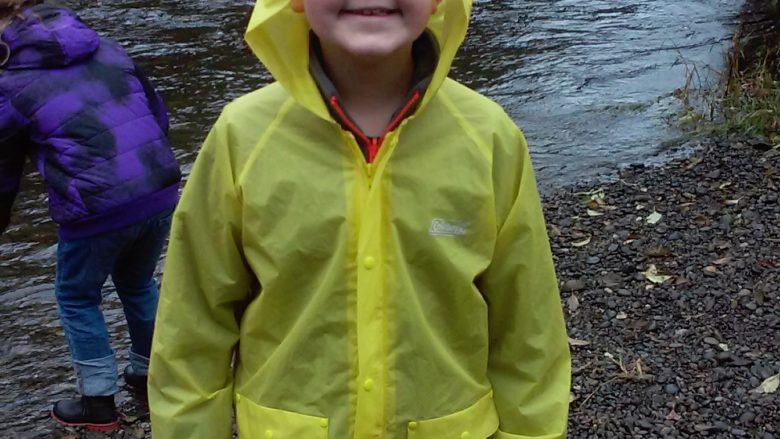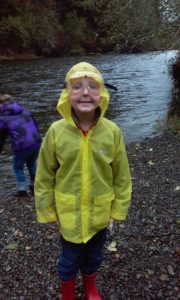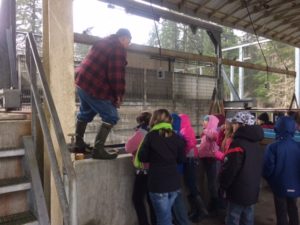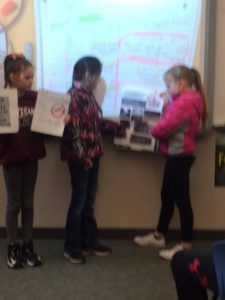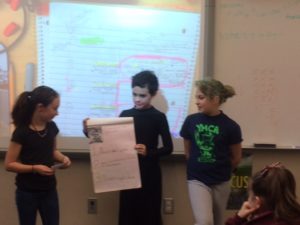The Nisqually River Education Project, South Sound GREEN and Chehalis Basin Education Consortium are offering the first ever Climate Resiliency Fellows. This program aims to build a dynamic community of engaged teachers committed to engaging their students in learning about and taking action in local climate change issues and climate resiliency projects. The Fellows program is offered as a part of a 3 year, environmental literacy program supported by NOAA. Teachers in the program meet quarterly to receive curriculum support and brainstorm ideas for action projects that address local issues. Tina Niels a 4th grade teacher in the Montesano School District who is a participant in the program this year, and has be actively engaged in getting her students outside! Here is her 2nd blog post. Thanks, Tina, for sharing your work with us!
My students have been busy learning about weathering, erosion and changes due to climate change. We went water testing last week and visited the Bingham Creek Salmon hatchery.
I am attaching some pictures of them water testing. Their groups practiced prior to going in the classroom. This gave us all a chance to revisit the tests and the optimum levels for salmon. I know that the students were very proud of themselves for performing their tests at the site. Our tests came out great. The students have understood more and more of why the water should be clean, why there needs to be oxygen in the water, why when the water is over the banks it is muddy and much more. We looked for signs of erosion during water testing and found minimal signs.
Visiting the fish hatchery was a wonderful experience. The students learned a great deal of what happens at a hatchery. They got to handle the eggs and saw the eye in them. We saw several eagles around the hatchery. Like I said – they were fascinated in the process and handling the eggs was a thrill.
Today we had our erosion presentations. They worked in groups to research and find ways to prevent erosion. The presentations were all as different as the individual students in the groups. They had ideas like rocks, planting bushes and trees, web material, straw, brick walls and sand bags. They were very aware of how each itemwould work. This was a great way for students to do research for a purpose.
My students are learning to care for the environment, have empathy and look at ways they can make a difference.
